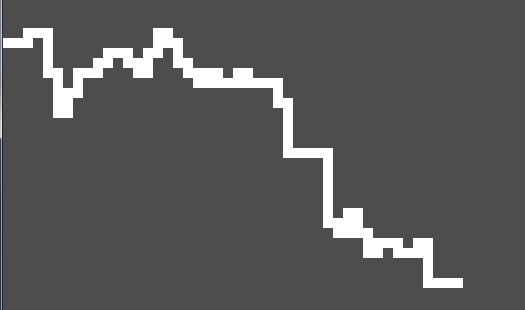Godot Version
v4.3 beta3
Question
Not sure if I managed to do a good title. Did my best. I am new at Godot and programming in general, couldn’t get out of a problem I’ve encountered.
I have a function that creates random Vector2s and appends to an array. They represent location of sprites that I’ll draw later on. This will be a randomly generated road. I do want to ID each item based on their coordinates (their X and Y). So, I can determine if they go straight, bend up, bend down and such. For some reason I have not been able to go beyond determining if they are straight. I am probably missing something, but couldn’t find it.
I thought about checking this as I instantiate each sprite, but I also want to see if it could be done in the way I am trying to do.
Here is my script
Here is how I have been trying to determine what each Vector2 is neighbored to. By checking X and Y values of each item, comparing them to one before and one after.
You could stor some info for each sprite. You need 4 bits. (8 possibilities that represent paths from current position, none being an island, and only having one being a dead end)
enum paths {
None = 0x0,
Up = 0x1,
Down = 0x2,
Left = 0x4,
Right = 0x8
}
You start with none then you logically add a direction.
If you have path == path.Left + paths.Right it’s horizontal straight.
If you have path == paths.Up+paths.Down vertical straight path
You could probably do some math with the coordinates to do the same thing.
Scenarios 2,3 and 4 are combinations of scenario 0 and 1.
For example 2 is x+1 followed by y-1.
So those scenarios can be thrown out provided you don’t need to enforce a gap.
Theoretically you can only traverse left to right.
You also have to prevent walking back over a previous step.
I did a mock up with a ColorRect node and no real bounds checking.
var block_count_y:int = 64
var block_pos:Vector2 = Vector2.ZERO
var prev_dir:Vector2 = Vector2.ZERO
func _ready() -> void:
seed(1)
print(get_viewport_rect())
block_pos = get_rand_start_vector()
get_new_block(block_pos)
for n in 103:
if n == 2:
pass
block_pos = get_next_block_dir() + block_pos
get_new_block(block_pos)
func get_next_block_dir()->Vector2:
# next block can only be up/down,right
const MULTI:Array[Vector2] = [Vector2(0,-10), Vector2(10, 0), Vector2(0, 10)]
var next_dir:Array[Vector2]
for dir in MULTI:
if dir != -(prev_dir):
next_dir.append(dir)
prev_dir = next_dir.pick_random()
return prev_dir
func get_rand_start_vector()->Vector2:
var n:int = randi() % (block_count_y - 1)
return Vector2(0,n * 10)
func get_new_block(block_pos:Vector2)->ColorRect:
var block:ColorRect = ColorRect.new()
block.size = Vector2(10,10)
add_child(block)
block.position = block_pos
return block
This is the road it creates:

You can see what I mean by not enforcing a “gap” wherein many places will traverse for example down, right, and up creating a square.
You can store the type of block it is based on prev_direction and next_direction in a dictionary or an array.
prev_direction next_direction block_type for the block at prev_direction
Right Up scenario2
Down scenario3
Right scenario0
Up Up scenario1
Right scenario4
Down Right scenario5(not shown)
Down scenario1
Note that I use seed(1) for testing. It is a must to repeat values until you have the code nailed down.

